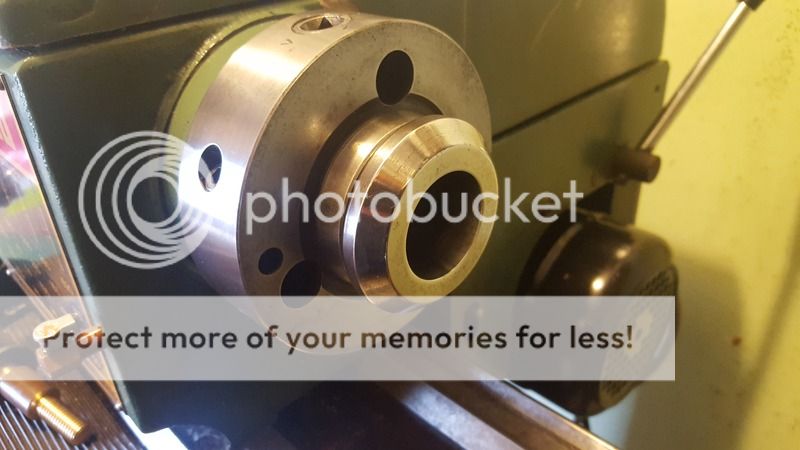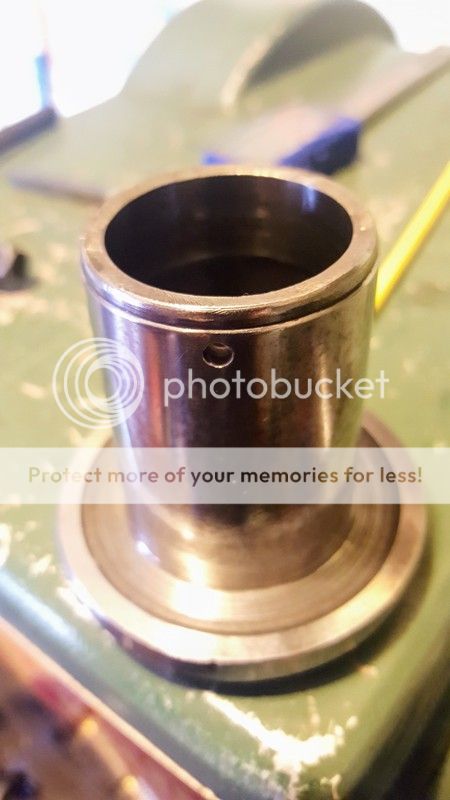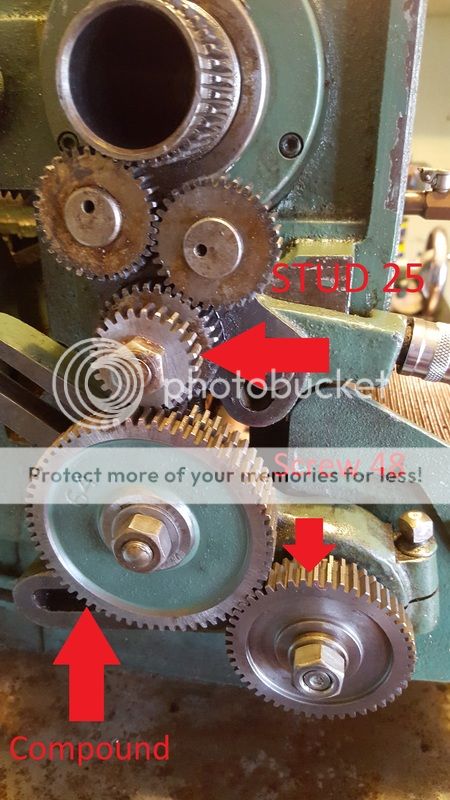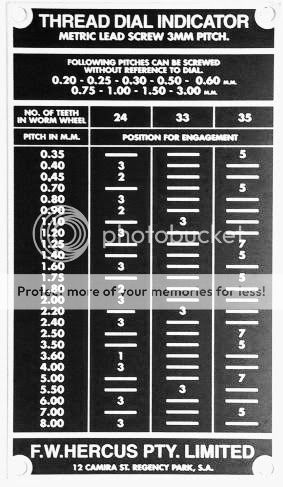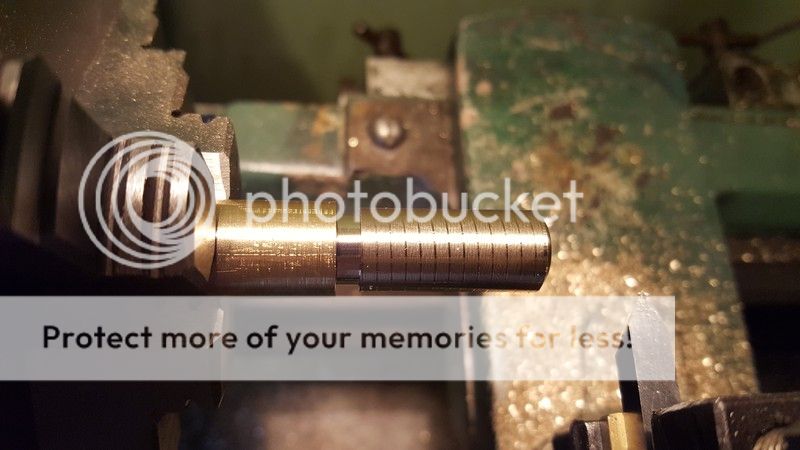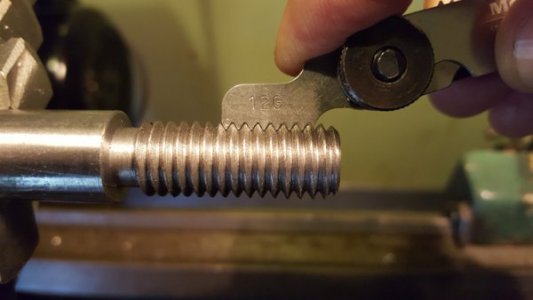I need some help... BTW Here I might say something wrong or beside the point as I try to explain what is happening.
Tried to cut an imperial thread 12 TPI. My lathe is an ATM with means the leadscrew has a 3mm pitch and the gear configuration is set up for metric. So is the quick change gearbox.
I bought the "kit" allowing imperial threading. This consisted of a set of gears - the 80 is not shown but that came with it too.
It also included this table
So I changed gear setup and found I didn't have another bush and bolt for the 80 tooth gear as shown in the table but I was advised that if I can get the compound 63T-64T to drive directly to the screw gear - 48T -it's fine as the 80T only transfers from one to the other.
So I did that, but I'm not so sure it's right. I reckon that if the 80T was in the position that's shown in the diagram the screw gear would turn in the opposite direction. I'm not sure this is connected with the problem I'm having but bear with me so I can get to the final result.
BTW here's how I connected it
Then used the gear box as it shows LH on 1.2 and RH on A
I also made the assumption that if I use the same position each time on my metric thread chasing dial I'll hit the same spot each time.
Here's the TCD chart
My first pass was indeed 12 TPI
But after the initial pass, very incrementally at the same pitch, the cut each time was very close to the pass before it. It wasn't obvious until 4 or 5 passes as I was cutting light. After further passes I could see the thread was "disappearing" as it went further and further.
I used position 3 on the thread chasing dial as the gear box was to be set at 1.2 so I chose the same positon on the thread dial. It seems a very small error between the metric and the imperial was compounding.
So any ideas? where is the error that caused the same pitch but incremental position change on the work?
My instinct is the metric thread dial which has 3 gears in it to choose from, but I can't explain exactly why or how to make the choice that will solve my problem.
